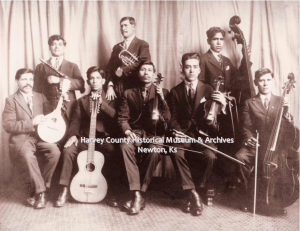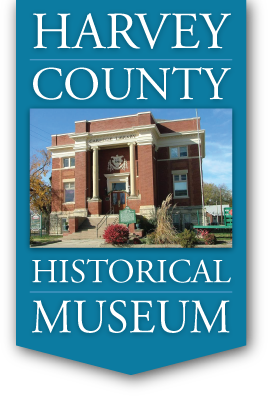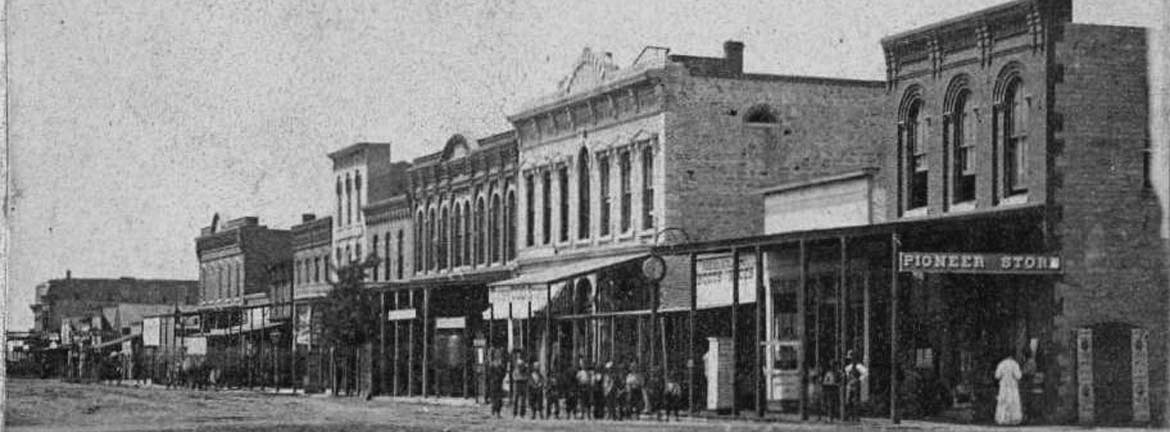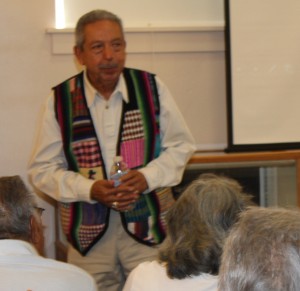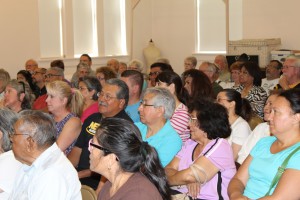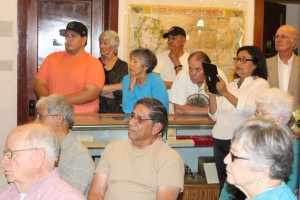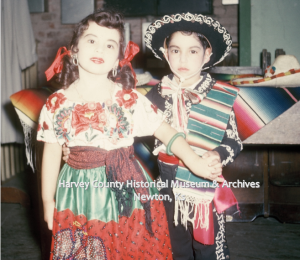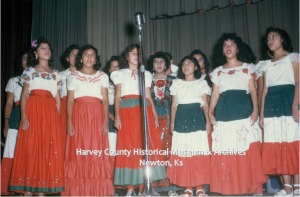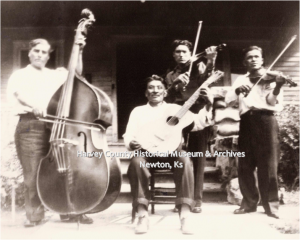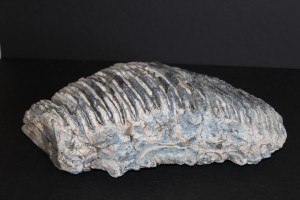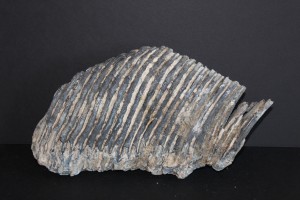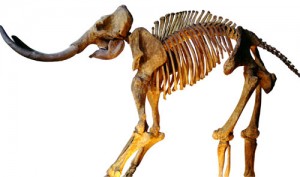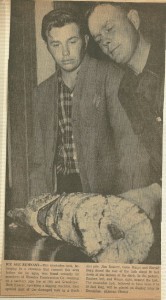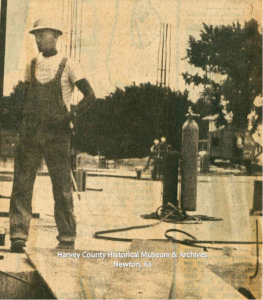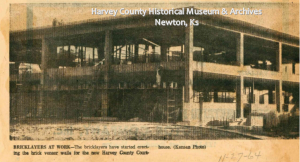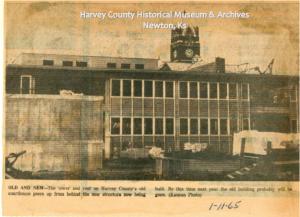by Kristine Schmucker, HCHM Curator
“When the county builds a new courthouse, Harvey County will have a fine building that will be a credit to the area for a half a century.” (John Stauffer, Editorial, Newton Kansan, 25 June 1955, p. 4.)
In June 1955, the County Commissioners adopted a resolution providing for a one-mill levy on all taxable property in the county. The money collected would go into a fund for “building, equipping and furnishing a courthouse and jail.” (Newton Kansan, 24 June 1955, p.1.) They Commissioners estimated that with the county’s valuation at approximately $49,000,000 the fund would build up to $490,000 in ten years. This money could only be used to build a new courthouse, it could not be used to make repairs on the 1906 structure.
The reporter for the Newton Kansan explained that citizens could,
“overrule commission action by signing petitions in opposition to the new fund. At least 10 per cent of the qualified electors of the county must sign such petitions by Aug. 6 and the petitions must be in the hands of the county clerk to make such a protest valid.”
There seem to have been no protests to the County Commissioner’s plan. In an editorial in the Newton Kansan on June 25, 1955, editor John Stauffer praised the County Commissioners noting that they “recognized the need for a new building and have provided the best way possible to build it.”
Plans for a new courthouse were underway. In August 1962, the Newton Kansan reported,
“The present building is deteriorating rapidly. An overhaul job would probably cost in the neighborhood of $50,000. . . .At current costs, price estimates for a new building range all the way from $900,000 to $1,200,000.” (Newton Kansan, 17 August 1962.)
The old building was maintained, however, with repairs to the roof approved by the Commissioners in 1962 at a cost of $636.00. (Commission Proceedings, 20 February 1962).
“Not unpleasing to the eye.”
Early in March 1963, the County Commissioners chartered a plane “at their own expense,” to visit the Cherokee County Courthouse in Columbus.
“Their eyes were literally . . . knocked out by what they saw – a commodious two-story building, with a jail added on top, erected in 1957 for $600,000.
Commissioner Warren Long commented that the Cherokee County Courthouse was “unquestionably the finest example we’ve encountered.” Commissioners Eldo Steele and Clarence J. Tangeman agreed, although they did not like the jail on the top floor of the building. They further noted that “by passing on frills and curlicues outside . . . [Cherokee County] concentrated on roominess and conveniences . . . coming up with a shapely rectangle that is not unpleasing to the eye.” (Newton Kansan, 13 March 1963)
With this building as a model, the Commissioners began work with architect, Ken Miller with the Hutchinson firm of Miller, Hiett, Dronberger & Arbuckle. After several drafts, the design was approved. Law-Pollitt Construction, Wichita, was hired for the construction.
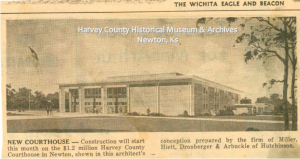
Clipping from the Wichita Eagle, January 1964.
Although the Presbyterian Church site had been purchased several years earlier gaining possession of the rest of the block was desirable.
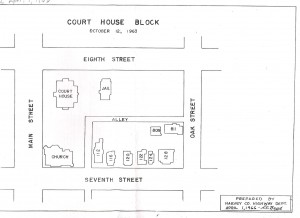
Layout of courthouse block, 1963.
Agreements were reached with the homeowners in May 1963. The county obtained all of Block 22 for the courthouse. The county auctioned the buildings on six properties on October 12, 1963. The buildings were either demolished or moved.
-

-
Description of Property on Auction.
-
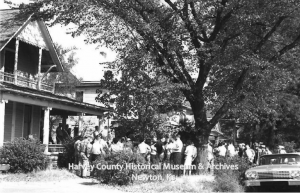
-
Auction Day
-
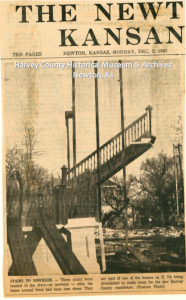
-
Stairway from one of the houses demolished.
“A fine building:” the New Courthouse
Construction on the new courthouse was begun in May 1964. The building was ready for occupancy at the end of December 1965.
Dedication for the new courthouse was held in April 1966.
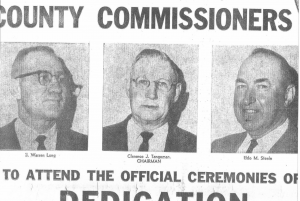
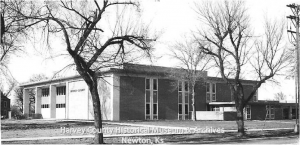
Harvey County Courthouse, 1966
The 1906 Courthouse was torn down in the spring and summer of 1966.
The Harvey County Courthouse constructed in 1965-66 is turning 50 in 2015-16, the same age as the 1906 Courthouse when it was demolished. While the staff worked on the exhibit, “50 Years of Service: the Harvey County Courthouse,” we found ourselves asking questions.
- What makes one architectural style more important than another? Fifty years from now, will Harvey County residents look back at the 1966 structure and say, ‘we are glad they preserved the courthouse and it’s 60s architecture?’ Will some still mourn the loss of the 1906 structure?
- When do the realities of caring for an aging structure with accessibility issues and the money it costs, become too much of a burden for a community and a new building is desirable? Who makes that decision?
All things to think about as we work to preserve the historic buildings that remain in our communities.
Sources:
- Newton Kansan, 24 June 1955, p.1.
- John Stauffer, Editorial, Newton Kansan, 25 June 1955, p. 4.
- Newton Kansan, 17 August 1962, 13 March 1963, 22 May 1963, 24 May 1963, .
- Hollis, R. L. Architect, “Engineering Report on Existing Structural Condition of Building, Inspection Completed 15 March 1953.” Journal Commission Proceedings, copy, HCHM Archives.
- Journal Commission Proceedings, 1953-1963, 1964-1971. copy HCHM Archives.
- “Courthouse Scrapbook” Newsclippings from the 1950s and 1960s during construction. HC Local Gov’t Box 1B File 7, HC Courthouse, HCHM Archives.
Fifty Years of Service: the Harvey County Courthouse was made possible through a grant from the Kansas Humanities Council, a nonprofit cultural organization promoting understanding of the history, traditions, and ideas that shape our lives and build community.
Courthouse blog posts:
On-line exhibit
Demolition of the 1906 Courthouse
